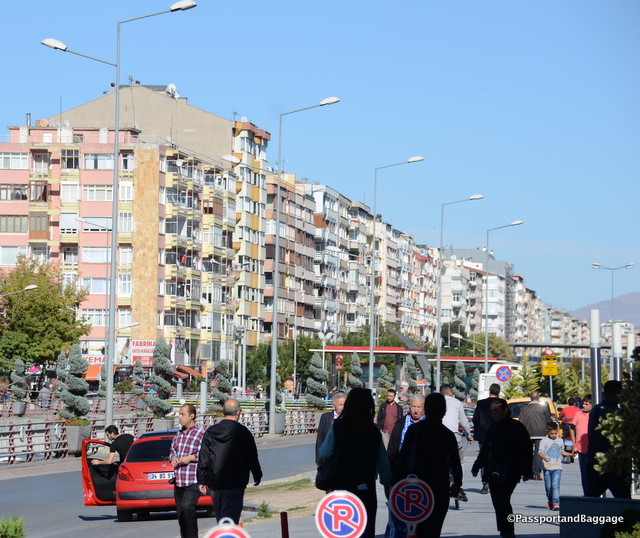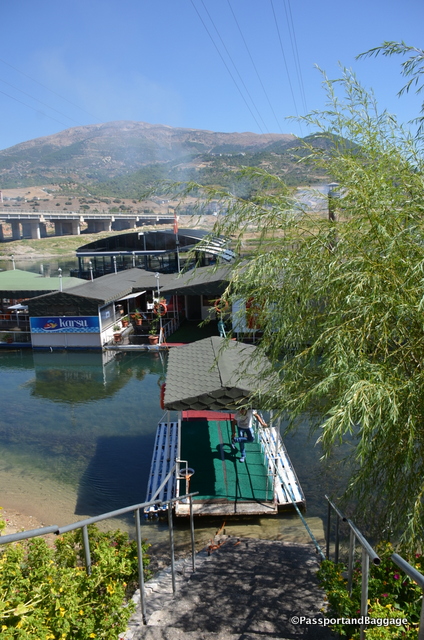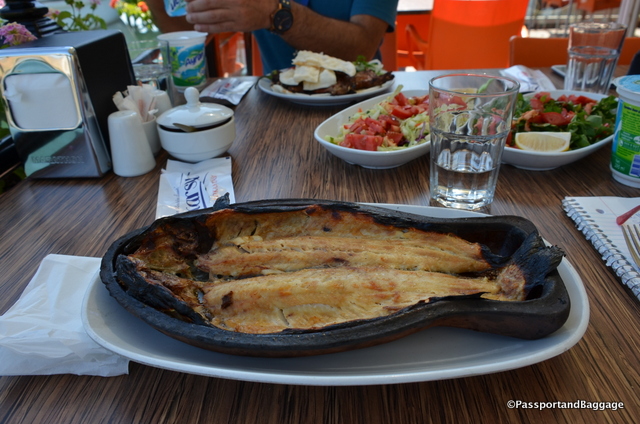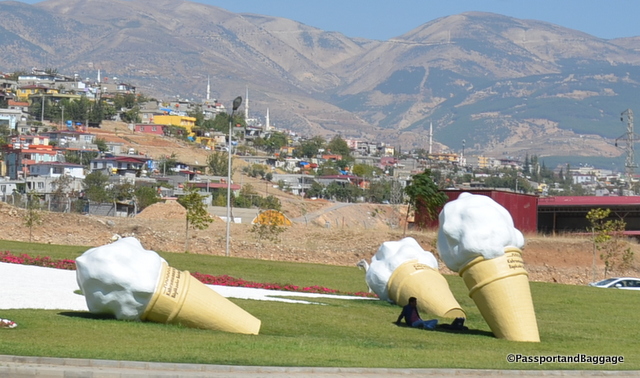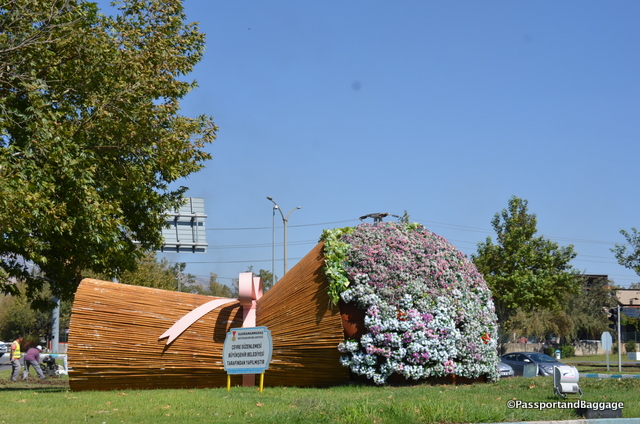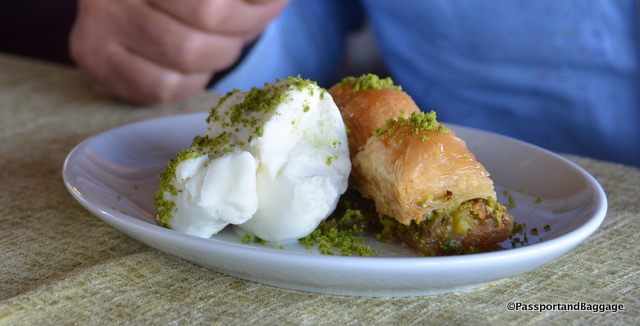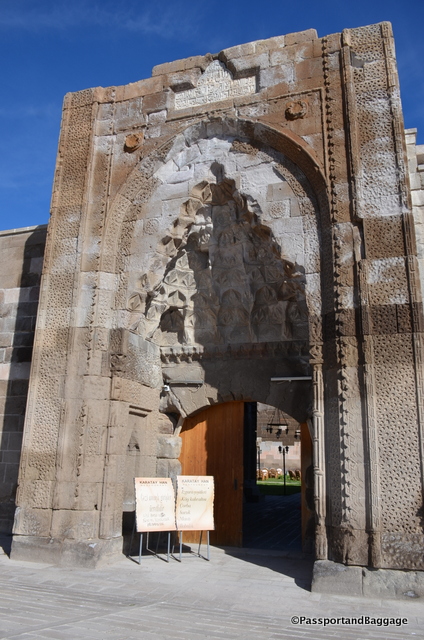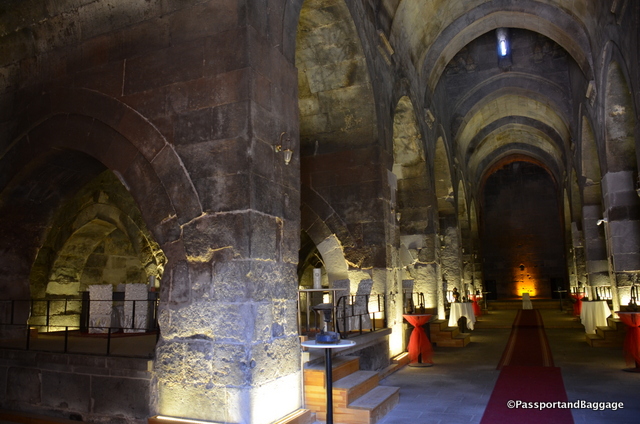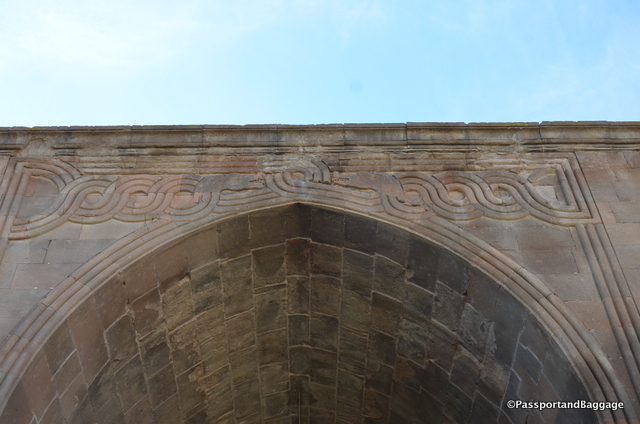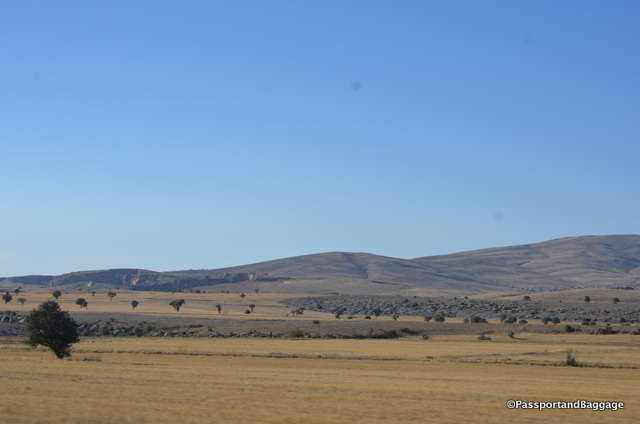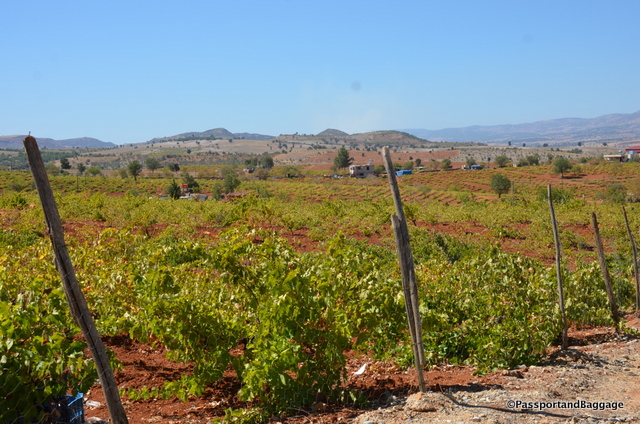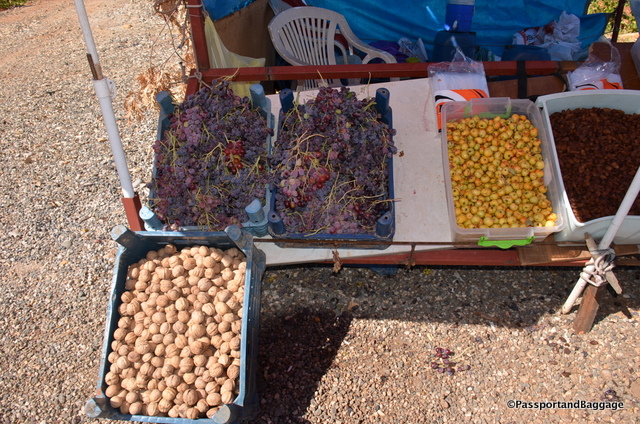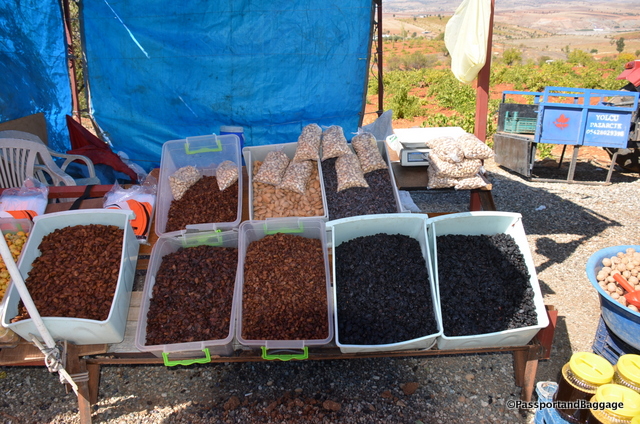September 26, 2016
Turkey is a vast country with lots and lots of open space between its cities. I am off to visit Mount Nemrut, but it is not easy, it includes long drives through the same scenery for hours.
The day began at 9:00 in the morning with a long drive from Kayseri. A stop for a fabulous fish lunch on a river, sitting on a boat, right next to the fish farm.
Our next stop was in the town of Marash for ice cream. This ice cream is different than anything you have encountered, and is specific to this region of Turkey.
First, it is made from goats milk. Second it is mixed with orchid root. The goats milk is not really noticeable unless you get the plain flavor, and then it has a touch of goat cheese flavor, if you have any other flavor, it is just a rich and creamy ice cream.
The orchid root, however, changes the texture a bit. It gives it a slight gelatinous texture, and therefore keeps the shape of the ice cream considerably longer, so much longer in fact, that you need a knife and fork to eat it.
According to the Marash website: Many years ago, a natural food enthusiast from a mountainous village of Kahramanmaraş, Turkey, was attempting to make his own Salep, a popular Eastern European milky drink made from the powdered root of the orchid flower. He combined the roots of wild orchids together with the nutrient rich milk of the local mountain goats, and left it to cool. Alas, the Salep didn’t taste quite right but in its place, this creative connoisseur realized that he had in fact invented a new dessert all of its own! Refreshing, healthy, and strangely stretchy, the great taste and originality of this dessert soon spread across the country.
The countryside of Eastern Anatolya is similar to the central valley of California. It has its basis in a volcanic formation with rich soil and flat valleys leading up to copper oxide rich foothills and then mountains.
The entire area is agricultural and barely populated. There are a few large industrial cities as you travel along, but for the most part your hours of driving are spent looking at mother earth in various stages of farm or fallow.
We passed pistachios, tobacco, pumpkins (grown only for their seeds), potatoes, sugar beets, and obviously many other crops I did not recognize, as well as a substantial amount of sheep and cattle.
The one thing that this area has that California does not is Caravansaries. They were situated approximately every 25 miles and were there to protect the camel herds that carried all the goods traded along the spice routes, basically they served as Bed and Breakfast’s for you, your entourage and your camels, complete with a security system.
Most typically a caravanserai was a building with a square or rectangular walled exterior, with a single portal wide enough to permit large or heavily laden beasts such as camels to enter. The courtyard was almost always open to the sky, and the inside walls of the enclosure were outfitted with a number of identical stalls, bays, niches, or chambers to accommodate merchants and their servants, animals, and merchandise.
Caravanserais provided water for human and animal consumption, washing, and ritual ablutions. Sometimes they had elaborate baths. They also kept fodder for animals and had shops for travelers where they could acquire new supplies. In addition, some shops bought goods from the traveling merchants.
A few shots of the countryside
*
*
